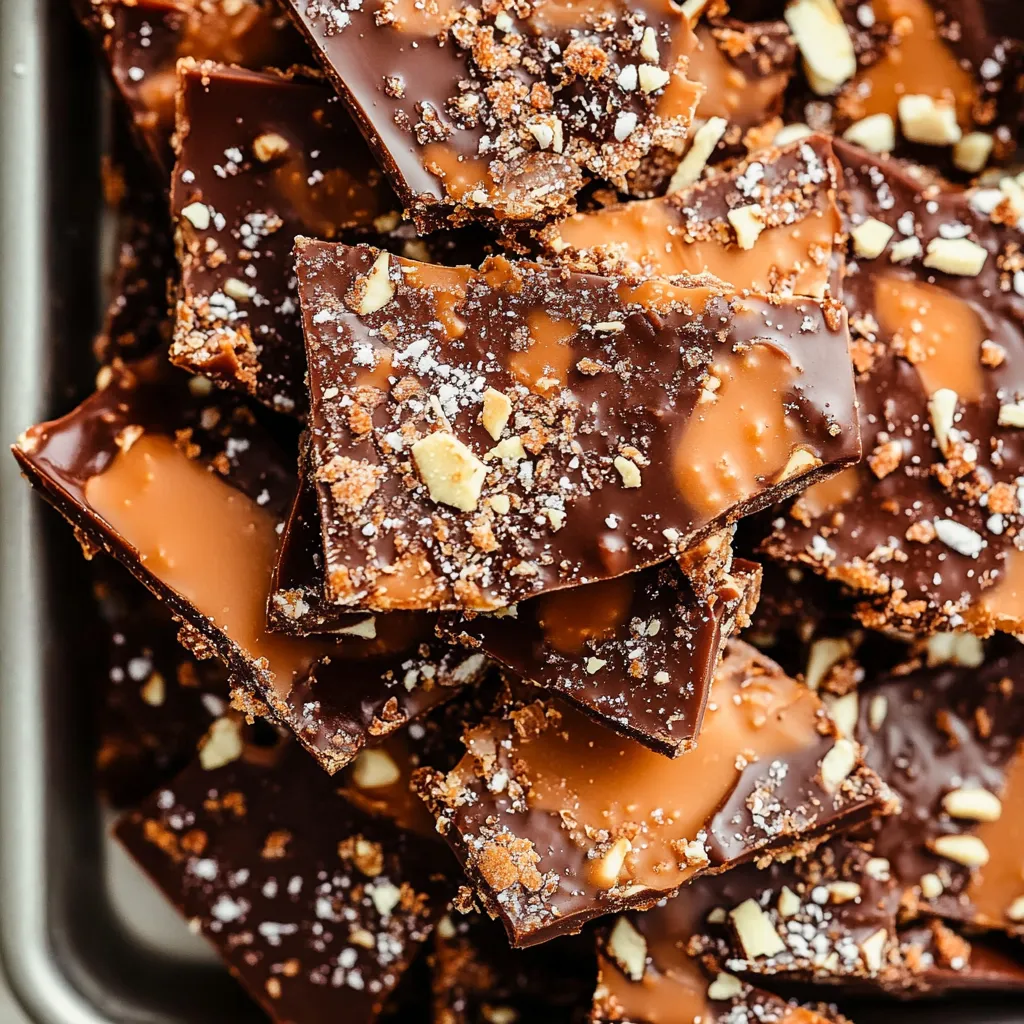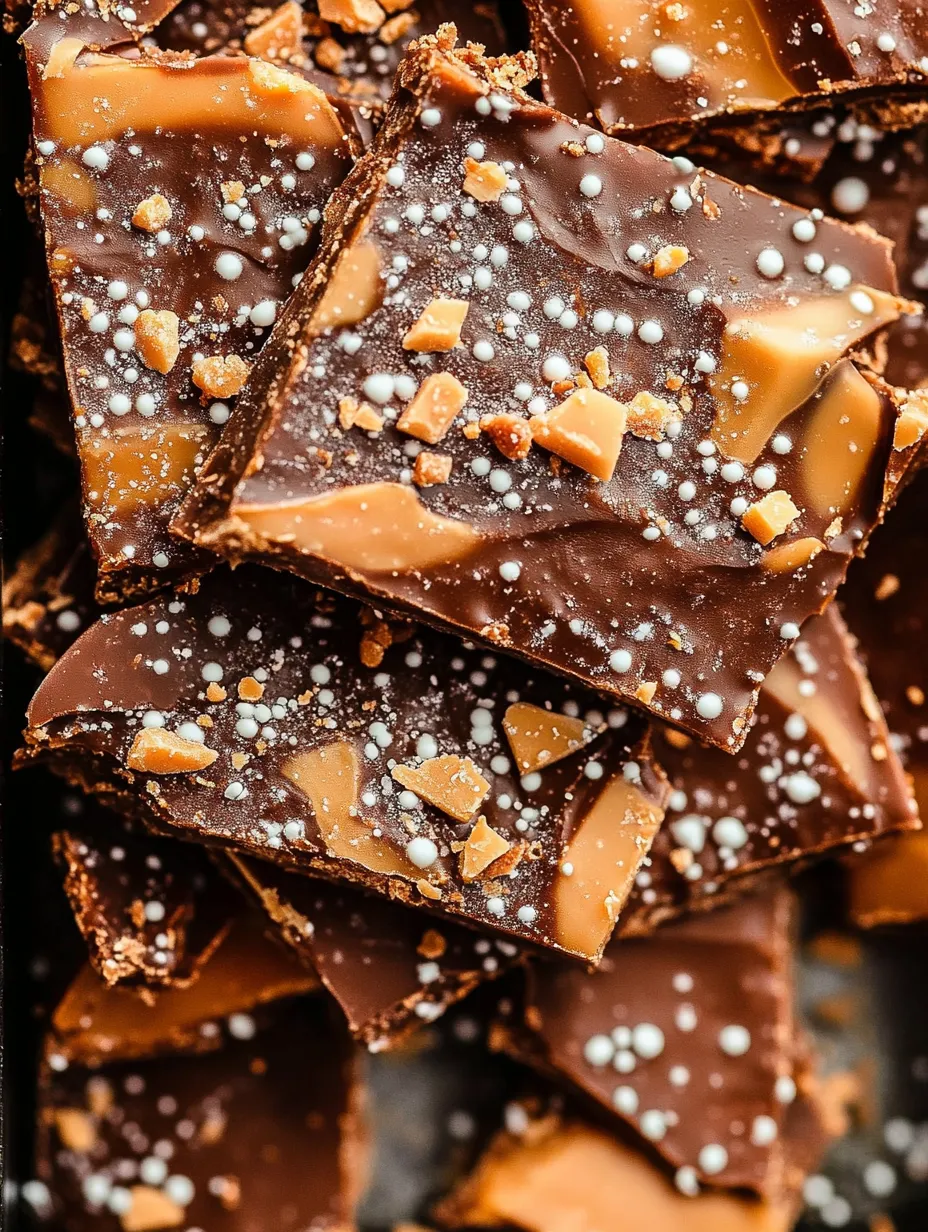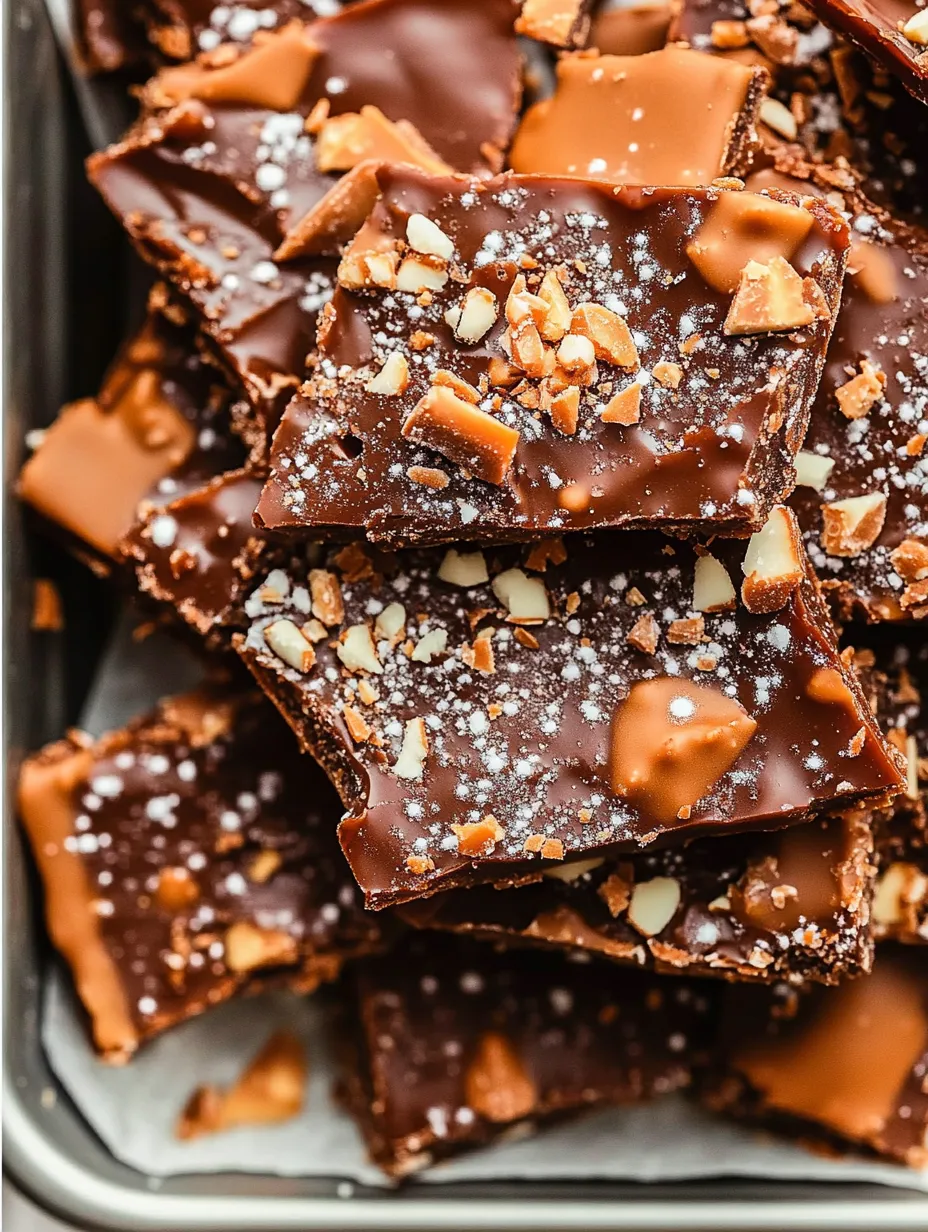 Save
Save
This homemade toffee recipe creates a rich, buttery treat that's incredibly addictive with its perfect balance of sweet caramel, crunchy nuts, and smooth chocolate. I've been making this for holiday gifts for years, and it never fails to impress even my most discerning friends.
I first made this toffee when I needed last minute holiday gifts during a snowstorm. The simple pantry ingredients saved me, and now it's become the most requested treat from my family every December.
Ingredients
- Unsalted chopped almonds for texture and that classic toffee flavor
- Salted butter creates the rich foundation of the candy
- Granulated sugar transforms into caramel magic when heated properly
- Semisweet chocolate chips create the perfect sweet topping that balances the buttery toffee
Step-by-Step Instructions
- Prepare the pan
- Line your jelly roll pan with parchment or a silicone mat. This is critical for easy removal later. Scatter the chopped almonds across the bottom. They won't cover the entire surface but will provide a delicious base layer throughout your toffee.
- Melt the butter and sugar
- Combine butter and sugar in a heavy saucepan over low heat. This slow melting process prevents burning and ensures even heating. Stir constantly until butter is completely melted and incorporated with the sugar.
- Boil to perfection
- Increase to medium low heat and bring mixture to a boil. Stir occasionally but gently. Vigorous stirring can cause crystallization. Watch for the mixture to reach 295 300 degrees F on a candy thermometer. The color will transform to a gorgeous amber brown indicating perfect caramelization.
- Pour and spread
- Carefully pour the molten toffee over your prepared nut layer. Work quickly but cautiously as the mixture is extremely hot. Use a silicone spatula to spread evenly across the pan.
- Add chocolate layer
- Sprinkle chocolate chips over the hot toffee surface. The residual heat will melt them naturally within about 5 minutes. Gently spread the melted chocolate into an even layer using an offset spatula.
- Final touches
- Sprinkle the remaining chopped almonds over the melted chocolate while still warm so they adhere properly. Let the entire confection cool completely at room temperature until fully set.
- Break and enjoy
- Once completely firm, break the toffee into irregular pieces for that authentic homemade look. The random shapes create more interesting pieces than cutting would.
 Save
Save
The secret to this toffee's exceptional texture is achieving the hard crack stage precisely at 295 300°F. My grandmother taught me that patience during this step transforms ordinary ingredients into extraordinary candy. The first time I made this with my daughter, watching her eyes light up as we broke apart the finished toffee became one of my favorite kitchen memories.
Temperature Matters
The candy thermometer is non negotiable for this recipe. Eyeballing the color alone can lead to undercooked sticky toffee or burnt bitter results. If you live at high altitude, you'll need to adjust your target temperature down by about 2 degrees F for every 1,000 feet above sea level. The hard crack stage creates that perfect shattering texture that defines great toffee.
Substitution Options
While traditional toffee uses almonds, you can easily substitute pecans, walnuts, or even macadamia nuts for a different flavor profile. For a nut free version, try using broken pretzel pieces on the bottom and crushed toffee bits on top. The chocolate can be switched between dark, milk, or white varieties depending on your preference. For a dairy free version, coconut oil can replace butter, though the flavor will differ slightly from traditional toffee.
Troubleshooting Tips
If your toffee separates during cooking with an oily layer appearing, the heat was likely too high. Rescue it by reducing heat and vigorously whisking to reincorporate. Toffee that remains soft after cooling likely didn't reach proper temperature. This can happen with inaccurate thermometers. Always calibrate your candy thermometer before starting. Grainy texture usually indicates sugar crystallization, which can be prevented by avoiding excessive stirring and using a pastry brush dipped in water to wash down sugar crystals from the sides of the pan.
 Save
Save
Recipe FAQs
- → How do I know when my toffee has reached the right temperature?
The toffee should reach 295-300°F (hard crack stage) and have a rich amber brown color. A candy thermometer is essential for accuracy, but visual cues like the deep golden color are also helpful indicators that it's ready to be poured.
- → Can I substitute different nuts in this toffee?
Absolutely! While almonds are traditional, you can substitute with pecans, walnuts, hazelnuts, or even go nut-free. Just maintain the same quantities to preserve the balance of ingredients.
- → How should I store homemade toffee?
Store your toffee in an airtight container at room temperature for up to 2 weeks. For longer storage, you can refrigerate it for up to a month or freeze it for 2-3 months. Separate layers with parchment paper to prevent sticking.
- → Why did my toffee separate while cooking?
Separation usually occurs from rapid temperature changes or inconsistent stirring. To prevent this, melt the butter completely before adding sugar, heat gradually, and stir gently but consistently. Avoid dramatic temperature fluctuations during the cooking process.
- → What's the best way to break toffee into serving pieces?
Allow the toffee to cool completely until it's firm and set. Then either score it with a knife while still slightly warm, or simply break it into rustic pieces once fully hardened. For cleaner edges, you can use a sharp chef's knife on completely cooled toffee.
- → Can I make this toffee without a candy thermometer?
While a candy thermometer gives the most reliable results, you can use the cold water test. Drop a small amount of the cooking mixture into cold water - at hard crack stage (295-300°F), it will form hard, brittle threads that snap when bent.
